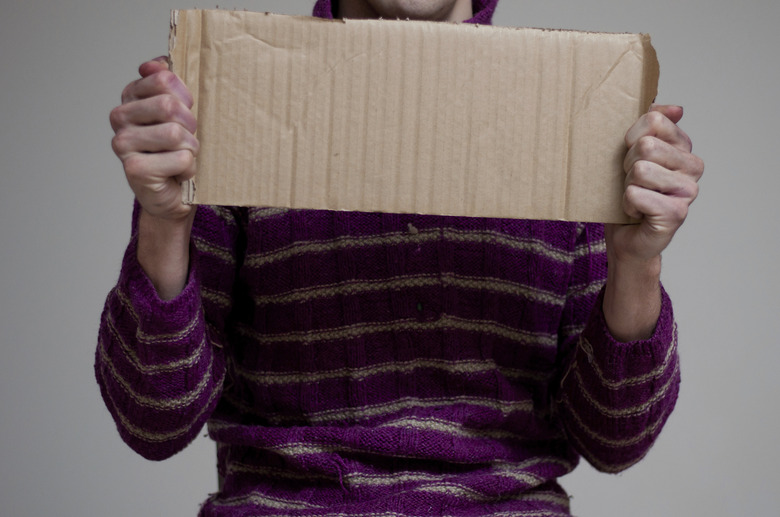How To Plant In A Cardboard Box
Imagine a container capable of nurturing plants through an entire growing season and then feeding it to the compost pile when its plant-growing days are through. The humble cardboard box does all of that.
Imagine a container capable of nurturing plants through an entire growing season and then feeding it to the compost pile when its plant-growing days are through. The humble cardboard box does all of that. With a few inexpensive modifications, a cardboard-box container performs every bit as well as more expensive planters or pots.
Choosing and Taping the Box
Choose a box sturdy enough to hold damp growing medium and to be punctured with drainage holes without tearing. A grocery- or liquor-store packing carton or mover's box is suitable. Reinforce its sides by folding the top flaps into the interior and securing them with waterproof tape. Also use the tape to seal the bottom flaps shut on the outside and reinforce the corners on the inside.
- Imagine a container capable of nurturing plants through an entire growing season and then feeding it to the compost pile when its plant-growing days are through.
- Reinforce its sides by folding the top flaps into the interior and securing them with waterproof tape.
Waterproofing the Planter
Cut a piece of 3 or 6 mil plastic sheeting 2 or 3 inches larger than the interior of the box. Squeeze a small amount of silicone calk onto the inside bottom of the box and spread it evenly with a paintbrush. Center the plastic sheeting firmly on the wet silicone; it's fine if the loose edges fall into the box. When the silicone has cured for two days, puncture drainage holes through the cardboard and plastic with a screwdriver. Place them at 4-inch intervals along the sides, about 1/2 inch above the lower edges.
Adding the Growing Medium
Before you weigh the box down with growing medium and water, place it in its permanent location where there's enough sun to grow your selected plants. Then fill it to within 1 inch of the top with a commercial, soilless planting mix. Pull the plastic flush against the sides as you work, and trim the excess to 1/2 inch below the interior edges when you're done. After securing the sheeting with silicone calk and letting it cure, pour water into the box until it flows from the drainage holes. Mix the water and medium and repeat until the medium is moist throughout.
- Cut a piece of 3 or 6 mil plastic sheeting 2 or 3 inches larger than the interior of the box.
- When the silicone has cured for two days, puncture drainage holes through the cardboard and plastic with a screwdriver.
Adding Seeds or Plants
If you're planting seeds, set them at the depth recommended on the package. Plant them more closely than recommended and thin them to the right spacing after they sprout. Space started plants of the same variety as far apart as you would in the garden, but ignore spacing recommendations for mixed plants. Instead, plant them close together and prune as they fill in. Set all the plants at the same depth they were in their nursery pots.
Watering and Fertilizer
Care for your cardboard box plants as you would any container plants. Whenever the surface of the growing medium is dry to the touch, water it. Check daily, because container plants lose moisture much more quickly than in-ground ones. Fertilize every two or three weeks with water-soluble fertilizer, such as a 24-8-16 product, at a rate of 1 tablespoon for each 1 gallon of water and count each application as a watering session. Check the rates on the label as they vary among brands.
- If you're planting seeds, set them at the depth recommended on the package.
- Space started plants of the same variety as far apart as you would in the garden, but ignore spacing recommendations for mixed plants.
References
- From Container to Kitchen: Growing Fruits and Vegetables in Pots; D.J. Herda
- University of Georgia Extension: Gardening in Containers
